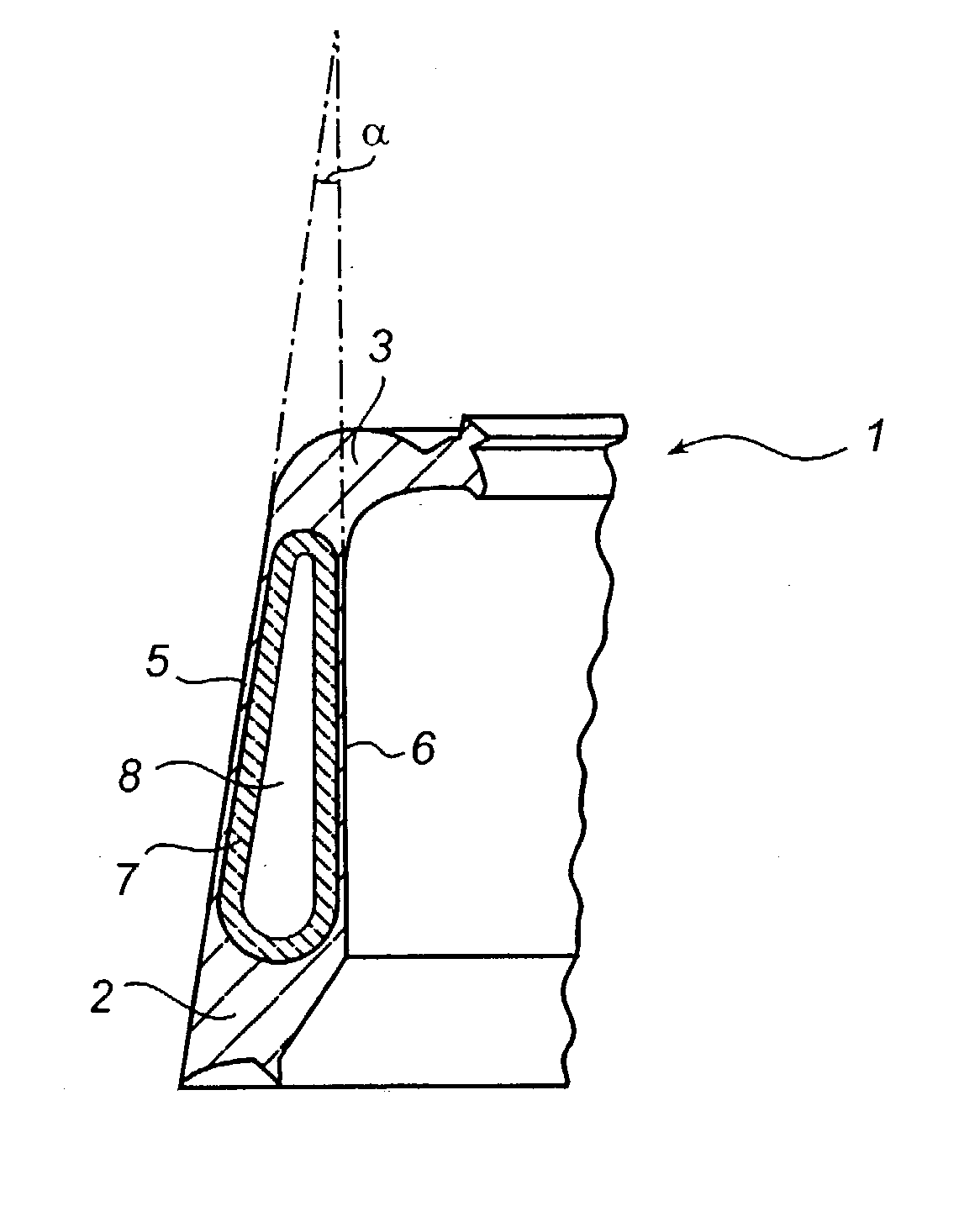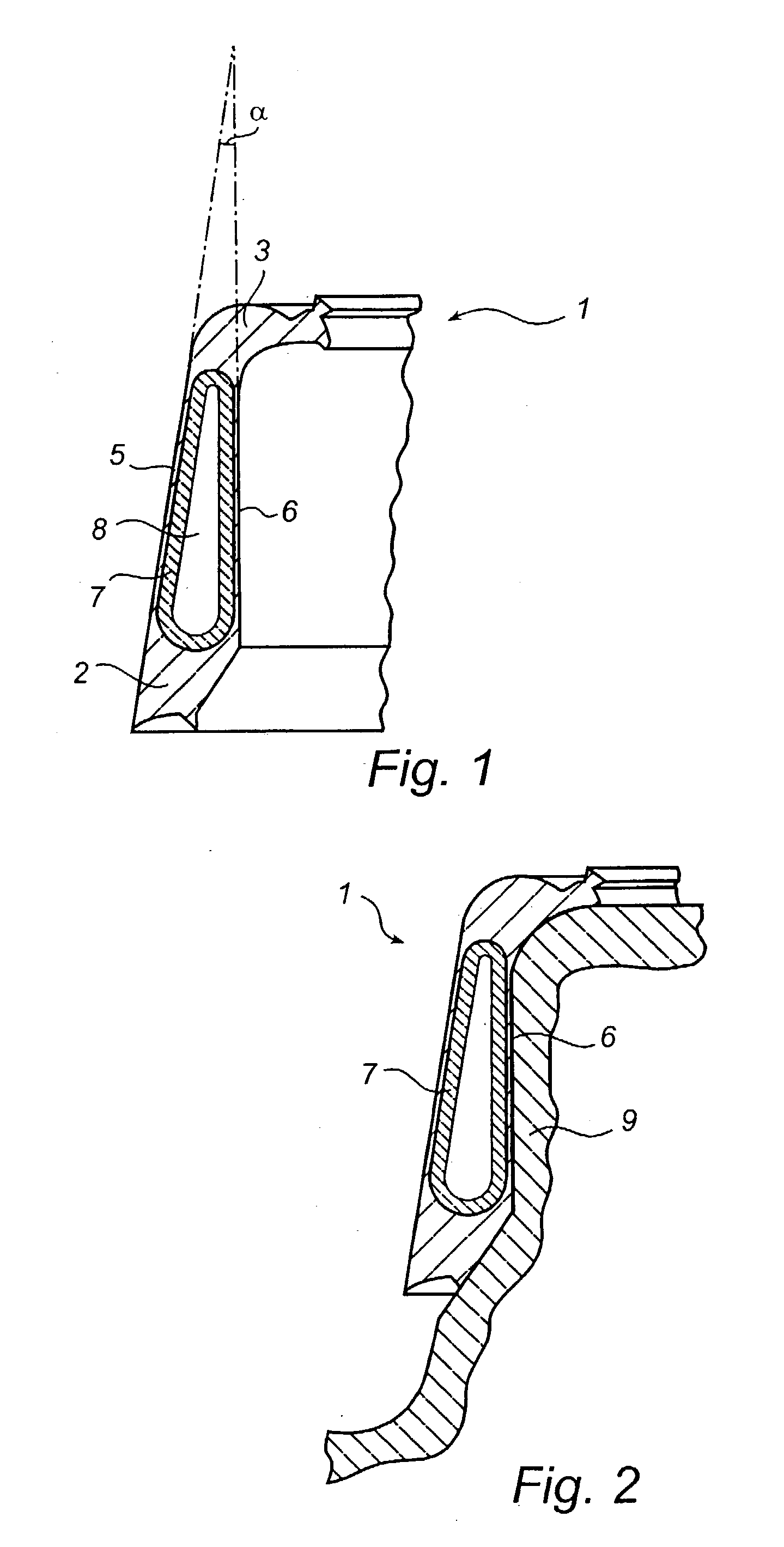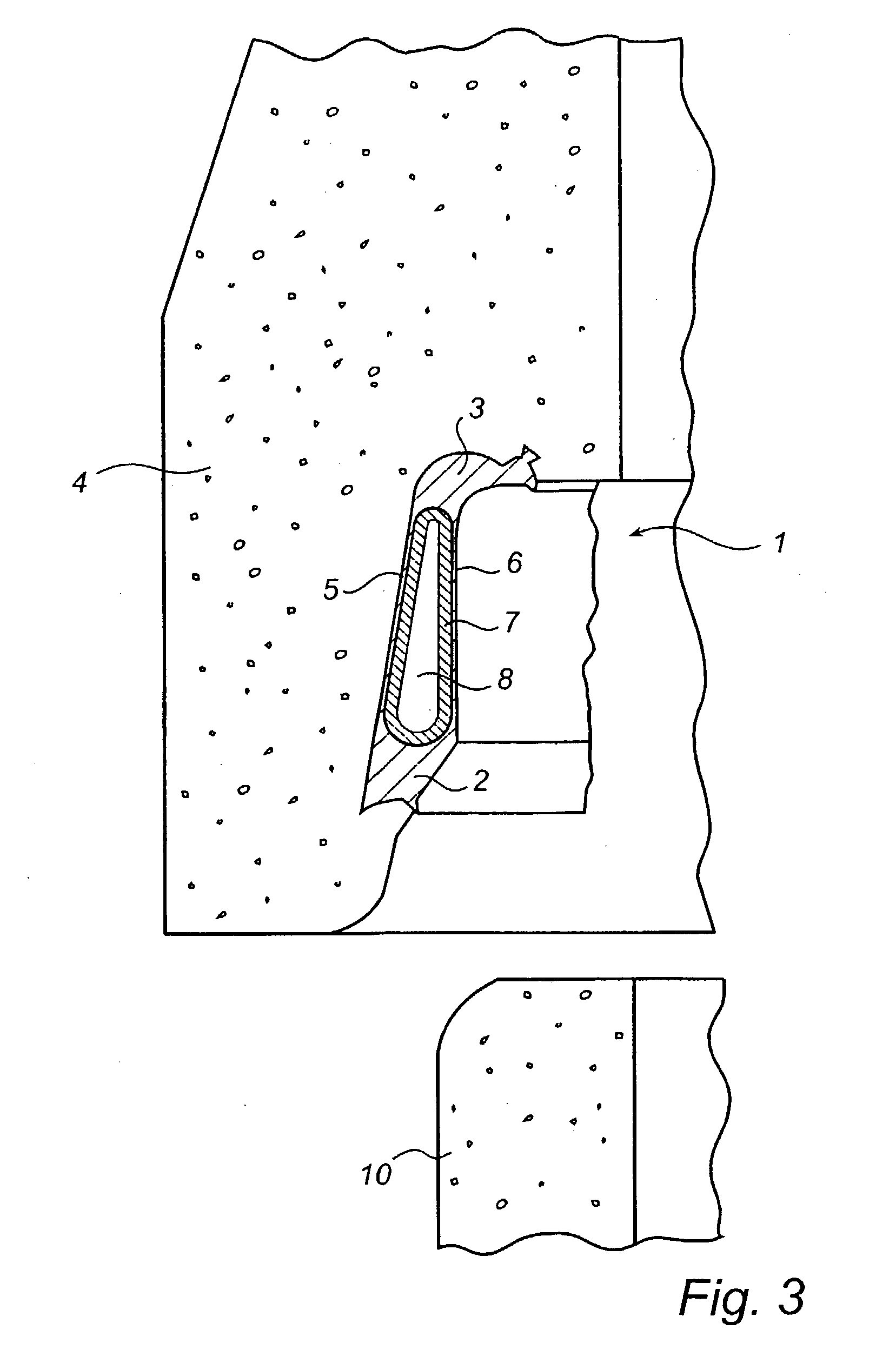Sealing ring for connecting two especially insertable concrete components
a technology of sealing ring and concrete, which is applied in the direction of engine sealing, sleeve/socket joint, shaping reinforcement, etc., can solve the problems of sealing ring moving on the mould ring during casting, sealing ring assuming incorrect fixing position in the socket, sealing ring compressing against the mould ring, etc., and achieves the effect of greater wall thickness
- Summary
- Abstract
- Description
- Claims
- Application Information
AI Technical Summary
Benefits of technology
Problems solved by technology
Method used
Image
Examples
Embodiment Construction
[0014] The sealing ring 1 shown in FIGS. 1-3 is made in one piece by means of co-extrusion of a soft rubber material with a hardness of 30-40 IRHD and a hard rubber material with a hardness of 60-80 IRHD. The soft rubber material and the hard rubber material are thus high-quality rubber materials, which according to various standard specifications may be used as sealing material.
[0015] The soft rubber material forms an axially outer sealing portion 2 and an axially inner sealing portion 3. In this connection, `axially outer` and `axially inner` refer to the location of the sealing ring 1 in a concrete pipe socket 4 (see FIG. 3). The soft rubber material further forms a radially outer sealing layer 5 and a radially inner sealing layer 6, which interconnect the portions 2 and 3 and which define, between them, a closed annular cavity, which is filled by a ring 7 of the hard rubber material. The ring 7 of hard rubber material is connected to the ring of soft rubber material formed by th...
PUM
 Login to View More
Login to View More Abstract
Description
Claims
Application Information
 Login to View More
Login to View More - R&D
- Intellectual Property
- Life Sciences
- Materials
- Tech Scout
- Unparalleled Data Quality
- Higher Quality Content
- 60% Fewer Hallucinations
Browse by: Latest US Patents, China's latest patents, Technical Efficacy Thesaurus, Application Domain, Technology Topic, Popular Technical Reports.
© 2025 PatSnap. All rights reserved.Legal|Privacy policy|Modern Slavery Act Transparency Statement|Sitemap|About US| Contact US: help@patsnap.com



